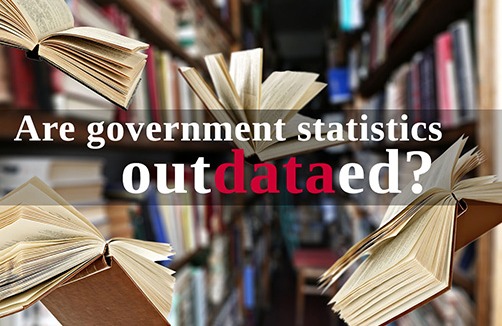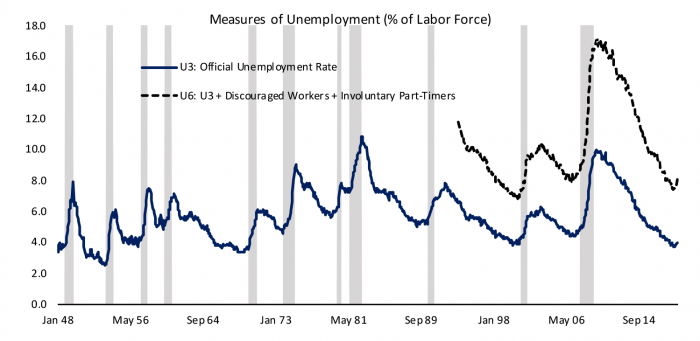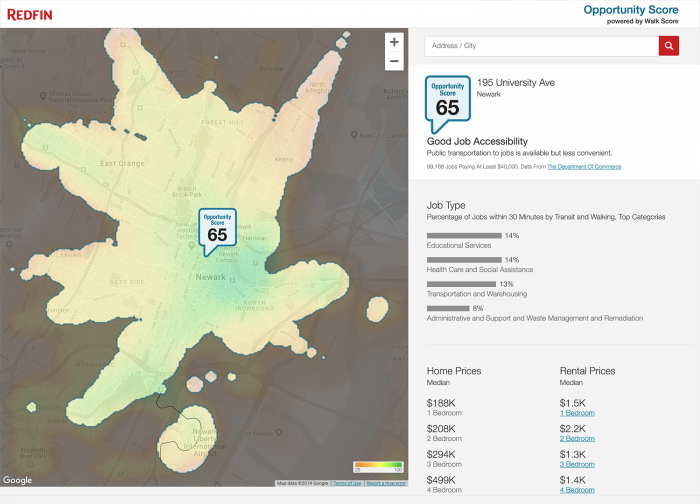
Public property: the central role of government information
As we recover from the longest federal government shutdown in history and look at the possibility of another one, it is a good time to reflect on the value of public goods and services. In particular, I discuss the value of government data, much of which was not available during the government shutdown, and the insights on the contribution of this data to private and public sector decision making documented by a recently released set of research papers (including one I helped write). One paper documents the historic developments that led to the systematic collection of federal data, showing that the gathering and processing of objective and publicly available information has historically been used to resolve social and political debates between business and labor and to formulate public policy. As long as there has been publicly available data there have been debates over its accuracy. Current debates over economic growth potential between the technology optimists and demography pessimists, as well as over the drivers of inequality, have echoes in the not too distant past. Government statisticians have responded to critiques and are constantly evolving with new understanding, technology, and the demands of our society in order for the data to best serve as an objective arbiter and documenter of who we are. The provision of comprehensive public data is also a resource to the private sector and has only become more central and valuable in the information age of big data. Far from replacing government statistics, companies need the more comprehensive government information to benchmark, calibrate and develop their own proprietary information. Government statisticians recognize the current reliance on surveys for data collection is fast becoming outdated and see the future as one of more efficiently collected and blended information between surveys, administrative data, and private sector sources. However, continued improvements in measurement will require funding and continuity of operation.
The Very Political History of, and Need for Government Statistics
In “On the Controversies Behind the Origins of the Federal Economic Statistics” Rutgers’ own Hugh Rockoff documents the historical development of government statistics and their perpetual entanglement in politics and policy debates. The development of price indexes to track inflation can be tracked back to the Civil War and they have been used over time to settle disputes around real wages (the degree to which prices are rising faster or slower than wages). The US Bureau of Labor was established in 1884 so an objective statistical agency could provide concrete evidence to inform political debates between organized labor and business and associated policy decisions.
Estimates of national income date back to 1665 and have served as a method both for governments to assess capacity for taxation as well as to examine income inequality. Similar to current-day discussions, income inequality was rising at the turn of the 19th century and the political debate ranged between those who attributed the development to robber barons and a plutocratic economic system versus those that pointed to a depressive effect on wages of a wave of immigrants. Carefully collected government statistics in 1918 confirmed dramatic income inequality with the top 1% earning 14% of national income and the top 10% taking home 35%. In comparison, data from the IRS in recent years show the top 1% making about 20% of aggregate income and the top 10% taking home just under 50%.
Data on employment were first collected at the state level often in partnership with private companies such as insurance companies that had a lot of information on customers. Data collection was often focused on measuring the amount of unemployment in times of economic distress. The need for objective national data became clear during the Great Depression. President Hoover used unpublished data to claim unemployment was declining in 1930. New York’s Industrial Commissioner, Frances Perkins, who later became the first female cabinet secretary under President Roosevelt, challenged Hoover’s claims based on data collected at the state level. The collection of national data on unemployment was initiated by the Works Projects Administration during the 1930s and became a national monthly survey in 1940.
Currently government data is used directly in allocating government resources and drawing voting districts. It is used in gauging the state of the economy and making decisions about fiscal and monetary policy. It also still serves as the arbiter in policy debates and discussions.
The Perpetual Cry of “The Data are Wrong!”
As long as there has been government data collection, there have been debates about their accuracy. Many commissions have been formed over the years to update methods and improve accuracy. Labor leaders have traditionally argued inflation is understated due to the underweighting of necessities for working class households versus the degree to which inflation is overstated due to the indexes’ lack of ability to capture quality improvement. Weights and quality adjustment methods have evolved in response. The undercounting of discouraged and underemployed workers in the unemployment rate is a long-standing issue. Since 1994 the BLS began tabulating alternative measures to calculate the U6 unemployment rate (Figure 1). A variety of shortcomings in national income and GDP have been discussed and many of them addressed. The rise of technology has raised new concerns about whether government data are keeping up with a rapidly changing economy.
Government statisticians are well aware of the challenges in measuring a transforming economy. In “Evolving Measurement for an Evolving Economy: Thoughts on 21st Century US Economic Statistics”, Ron Jarmin, who currently serves as Acting Director of the Census Bureau, discusses how government statistics need to continue to evolve. Jarmin notes that representative surveys were the pioneering innovation in producing high-quality statistics in the 20th century, but many have been suffering from declining response rates in recent years and aren’t keeping up with the need for higher-frequency information. Increased computing power and data mean there is a wealth of information that is not being fully incorporated into official statistics.
Jarmin describes a number of projects underway at various agencies to blend survey data with administrative data (which includes comprehensive data from sources such as tax returns or unemployment insurance) and alternative data from private sources. As an example, he describes a project underway at the Census Bureau that blends results from the survey that underpins the monthly retail sales report with scanner data and information from credit and debit card transactions that will improve the quality and granularity of the data and potentially make it available at a higher frequency.
Another Census effort is the Opportunity Project which combines government data with private sources and develops tools related to housing, transportation, employment and other issues intended for use by organizations and businesses. Figure 2 illustrates one such tool, the Opportunity Score, which is a collaboration between the Census Bureau and the real estate technology firm Redfin. The tool allows you to input an address and obtain a score between 0 and 100. The higher the number, the more accessible jobs are by either walking or public transportation. It also provides information on the types of jobs available and home prices and rents. Figure 2 shows that the area around Rutgers’ Newark Campus has an opportunity score of 65, which is considered good but the area doesn’t have very convenient job accessibility.
Data are a Public Private Partnership
In my paper with Ellen Hughes-Cromwick we document the value of government data for private sector decision making in a number of industries. The rise of big data has only made government data more valuable as it is needed for benchmarking, contextualizing, and fully developing firm or industry specific information, a point also underscored by Jarmin. The business model of a number of technology driven firms in finance and real estate wouldn’t be possible without easily available government data. Firms in industries from auto manufacturers to energy to finance all rely heavily on government data to make location, capital spending, compensation, and strategic decisions, as well as to track the prospective state of the broader economy and to forecast the broader economy. New regulations requiring banks to perform annual stress tests wouldn’t be possible without government economic statistics, and a number of financial markets couldn’t function without public data, including energy and agricultural futures that allow for hedging and risk management and inflation-indexed Treasury bonds.
We and Jarmin document how the government has been working with private industry to collect and distribute data more efficiently using newly available technologies, and Jarmin describes the future of one that blends survey and administrative government data with private sector sources of information. The government still plays a key role as private firms aren’t incentivized to make their data available as a public good, or to provide it consistently over time or ensure its quality and objectivity. The government currently has major projects underway to improve how it measures the health care and technology industries, but recent political shenanigans interrupted and disrupted that process. The government shutdown left us flying partially blind at a possible inflection point in the US economy putting policy makers at risk of making poorly calibrated decisions and put firms at risk of not being able to properly plan and optimize their operations. If anything the government should be devoting increased resources and continuity to the collection of government statistics in an information age.

